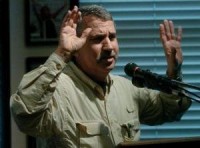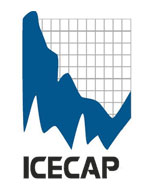By Thomas L Friedman, New York Times
I am really encouraged by President Obama’s commitment to clean energy and combating climate change. I just have three worries: whether he has the right policies, the right politics and the right official to sell his program to the country. Other than that, things look great!
Last week, House Democrats, with administration support, introduced a 600-page draft bill on energy and climate. At the center of it is a plan to reduce greenhouse-gas emissions through a complicated cap-and-trade system. These people have the very best of intentions, but I wish they would step back and ask again: Can cap-and-trade pass? Will it really work? And is it the best strategy, with all the bureaucracy it will require to monitor, auction emissions permits and manage the trading?

Advocates of cap-and-trade argue that it is preferable to a simple carbon tax because it fixes a national cap on carbon emissions and it “hides the ball” - it doesn’t use the word “tax” - even though it amounts to one. So it can get through Congress. That was true as long as no one thought cap-and-trade could ever pass, but now that it might under Mr. Obama, opponents are not playing hide the ball anymore.
In the past two weeks, you could hear a chorus of Republicans, coal-state Democrats, right-wing think tanks and enviro-skeptics all singing the same tune: “Cap-and-trade is a tax. Obama is going to raise your taxes and sacrifice U.S. jobs to combat this global-warming charade, which many scientists think is nonsense. Worse, cap-and-trade will be managed by Wall Street. If you liked credit-default swaps, you’re going to love carbon-offset swaps.”
Some of the refrains from this song have a very catchy appeal. They could easily kill this effort. So, if the Obama team cares about the “ends” of a stronger America and a more livable planet, as much as the “means,” I hope it will consider an alternative strategy, message and messenger. See full story here.
By Bill McAuliffe, Star Tribune
Rep. Michele Bachmann has said she wants Minnesotans “armed and dangerous” against the climate-protection strategy known as “cap and trade.” But what she and a fellow presenter encountered at a forum Thursday was a small army that engaged in a standing ovation, then some enemy fire.
About 500 people, perhaps fewer than half of them students, turned out at St. Cloud State University to hear Bachmann and author and global-warming skeptic Chris Horner elaborate on what has become a hot topic for her in recent months—a plan to establish a market for the right to emit carbon dioxide.
But after Bachmann was greeted warmly by many in the ballroom of the Atwood Memorial Center who cheered and rose to their feet, Horner was repeatedly pestered during a PowerPoint presentation by students insisting that he “answer the question” and holding up signs reading “Lies” and “Fact Check!”
Bachmann spoke for less than 10 minutes, during which she largely read her op-ed piece that appeared in Wednesday’s Star Tribune in which she criticized the cap-and-trade plan going before Congress as an “energy tax.” Horner spoke and took questions for about 40 minutes.
The two critics argued that cap-and-trade, which would set carbon dioxide emission limits and let emitters buy and sell emissions allowances, would drive up the price of energy, hurting families and the U.S. economy. Horner argued further that it wouldn’t reduce emissions of carbon dioxide, seen as a chief cause of global warming. He also dismissed the economic potential of wind energy, an area of alternative-energy leadership in Minnesota, prompting loud retorts from the student faction.
Afterward, Alfred Pekarek, an assistant professor of earth and atmospheric sciences at St. Cloud State and global warming skeptic who moderated the event, said he thought the event helped energize people over “what government is trying to do to us.”

But Jordan Angelle, a junior from Lindstrom, said global warming and cap-and-trade are issues “not just about money.” “It’s about the environment, too,” he said. “We’re young. We’re the future. We know [energy use] is going to take more money, but we can choose to use less.” Cap-and-trade was used in the 1990s to limit emissions of sulfur dioxide, which causes acid rain. Emissions were cut in half in 10 years.
Gov. Tim Pawlenty has encouraged Minnesota’s participation in a regional cap-and-trade program but is opposed to President Obama’s national initiative, believing it would create an economic strain, Pawlenty spokesman Brian McClung indicated Thursday. Pawlenty prefers to achieve emissions reductions through new technology, nuclear power and renewable energy sources, McClung said. David Sparby, chief executive officer of Northern States Power Co. Minnesota, an Xcel Energy company, said the company would support a market-based cap-and-trade strategy as opposed to a government mandate, and one that would be phased in over time to avoid spikes in energy costs.
Read a first hand account of those who tried to disrupt the Bachmann and Horner presentation here.


